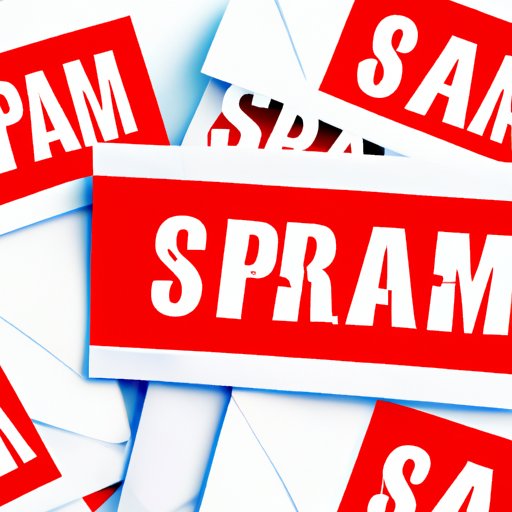
How to Stop Getting Spam Emails
Spam emails have become a persistent problem plaguing email users. They can be frustrating, annoying and even dangerous. Spam email isn’t just an intrusion into your daily routine; they can carry malicious software capable of stealing your identity, account information and more. If you’re tired of dealing with spam, fear not. There are several things you can do to stop spam emails. In this article, we’ll discuss 10 effective strategies you can use to stop spam emails.
Create a Spam Filter
A spam filter is a program that screens your incoming email messages and sorts them into designated folders – one for spam, one for non-spam emails. Creating a spam filter is easy. Most popular email services such as Gmail or Yahoo already have a built-in spam filter. To use them effectively, you may need to tweak some of the settings to ensure you receive the emails you need to see. Occasionally check your spam folder as legitimate emails may wind up there.
Use a Separate Email Address
Using a separate email address can help reduce the number of spam emails you receive. You can use this address for all your online registrations and interactions with websites. This way, even if your email address is sold or leaked, you won’t be inundated with spam in your primary mailbox. Ensure that you don’t mix the uses of the email addresses or share the primary email address publicly.
Report Spam to the Authorities
Reporting spam email may seem futile, but it can make a huge difference in reducing the amount of spam everyone receives. Governments offer authorities to whom you can report spam emails. Reporting spam can also help authorities track down spammers and stop them. Check with your email provider for instructions on how to report spam.
Don’t Click Links in Spam Emails
Never click links in spam emails. Malware, virus and phishing scams routinely distribute via email with links designed to trick you into downloading malicious software or giving away information. These emails are designed by hackers and fake accounts to steal your valuable personal information. Never enter your password information, credit card number or any other personal details on a web page linked in a spam email. Legitimate links will usually start with https://, and hovering the mouse over the link will often reveal the web address to which the link directs.
Unsubscribe from Unwanted Newsletters
Often, people find themselves receiving newsletters they never signed up for, making it difficult to identify actual important emails from fake ones. Unsubscribing can reduce the number of spam emails you receive from these newsletters. However, be careful while giving away your email address. Giving away your email address unknowingly may lead to more spam and malicious emails.
Set Up Email Rules
Email rules, also known as filters, help you stay organized by automatically sorting email from certain senders or under certain conditions. Setting up email rules will help you reduce not only spam but other unwanted emails as well. This can eliminate the need to go through your inbox to sort messages manually. Review your email rules periodically to ensure their continuing effectiveness.
Train Your Email Client to Better Identify Spam
If you’re using a popular email client such as Gmail, you can train the client to recognize spam emails. You can do this by flagging suspicious emails as spam. The email client may ask for your input on the nature of the email, and it uses this information to recognize similar emails as spam. Be patient with the training process; it may take time, but it is worth the effort.
Use Third-Party Tools
Third-party tools are designed to help address the spam problem. They can identify suspicious emails and block them before they even reach your inbox. Popular tools include SpamFighter, SPAMfighter Pro, and Spamihilator. Researching the use of a tool before utilizing will ensure your safety. Some of them can integrate directly with your email client, making the process easier.
Use Disposable Email Addresses
Disposable email addresses are temporary, fake email addresses that can be used for one-time purposes. Using a disposable email address is particularly useful for signing up for free trials, and other services requiring an email address they collect and add you to their mailing list. Be sure to be careful as these emails are not secure.
Conclusion
If you find yourself overwhelmed with spam emails, you’re not alone. But help is available. Utilizing one strategy, such as email rules only, won’t suffice. The most effective way to reduce spam is by combining multiple strategies. Take advantage of the solutions provided to help minimize the inflow of spam emails. By doing so, you’ll reduce the frustration of dealing with spam and enhance your online safety.





